Recent Storm Damage Posts
What Can a Flood Cut Reveal?
11/27/2024 (Permalink)
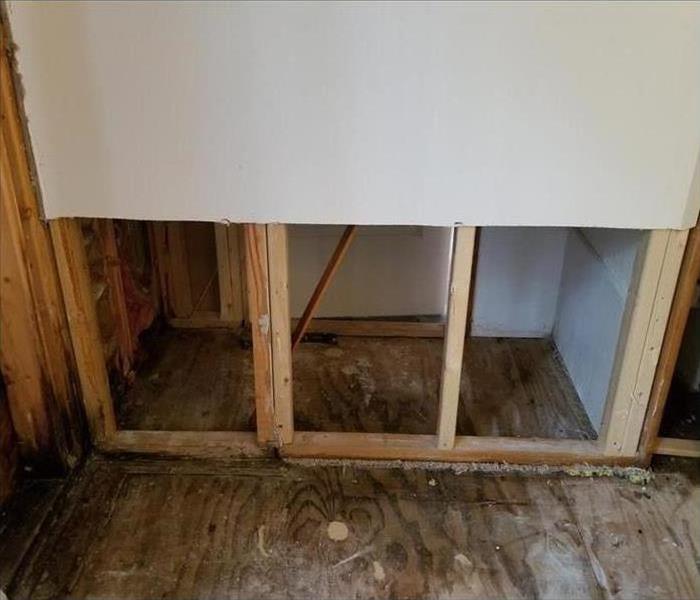 You can trust our trained team to restore your business or home after a storm, to make it "Like it never happened."
You can trust our trained team to restore your business or home after a storm, to make it "Like it never happened."
What Information Can A Flood Cut Provide?
Commercial property owners in locations prone to flooding may have heard of a flood cut. This procedure involves cutting out drywall one foot above the highest point of flood damage. Flood cuts enable damage mitigation experts to determine the extent of moisture present behind a wall. Here are several things this type of cut may reveal.
The Extent of Damage
A flood cut can help experts determine how much water is present in wall cavities. Standing water or residual moisture can heighten the risk of mold growth in a structure. A flood cut can also indicate other types of damage:
- Saturated drywall
- Ruined insulation
- Hidden moisture
Depending on the degree of damage, restoration experts may recommend that owners have restoration professionals tear out and replace drywall and insulation. If damage is less severe, increased ventilation and a dehumidifier can promote drying.
Whether Tearing Out Is Necessary
Porous materials such as drywall and insulation can be ruined by saturation with water and will pose a heightened mold risk. The category of water damage is an important consideration. If water damage resulting from a broken pipe is addressed quickly, drying may be all that is necessary. Contamination is probably a factor for damage caused by a sewer backup or flooding, and more extensive cleanup and restoration may be necessary.
Whether Mold Is Present
If water damage occurred more than 48 hours earlier, a flood cut can help experts determine whether mold is growing. This procedure may expose an amateur to mold spores. For this reason, business owners should not attempt to make a flood cut, particularly if a musty odor or other indications of fungal growth are present.
Only a mitigation expert should make a flood cut at a building in Tuckahoe, NY . To determine whether this procedure is necessary after flooding, contact a service that specializes in storm and water damage.
Building Resilience: Community Resources and Support After Water-Related Disasters
1/9/2024 (Permalink)
As winter's icy grasp tightens, it's time to ready your home for the challenges posed by winter storms. From freezing temperatures to heavy snowfall, proper preparation ensures the safety and warmth of your household during the coldest months. In this blog, we'll guide you through essential steps to fortify your home against winter storms, creating a haven of warmth and resilience.
Insulate Windows and Doors
Start by checking for drafts around windows and doors. Seal any gaps with weatherstripping or caulking to prevent heat loss. Consider using thermal curtains to add an extra layer of insulation.
Ensure your heating system is in peak condition by scheduling a professional inspection. Clean or replace filters, bleed radiators if necessary, and consider investing in a smart thermostat for efficient temperature control.
Protect Pipes from Freezing
Frozen pipes can lead to costly damage. Insulate exposed pipes with pipe sleeves or wrapping to prevent freezing. During extremely cold nights, leave faucets dripping to maintain water flow.
Create a winter storm emergency kit that includes essentials like blankets, warm clothing, non-perishable food items, bottled water, flashlights, batteries, and a first aid kit. Keep this kit easily accessible in case of power outages.
Backup Electricity
If you have a generator, schedule a maintenance check to ensure it's in working order. Test it periodically to guarantee a seamless transition in case of a power outage. Stock up on fuel and follow safety guidelines for generator use.
Trim Tree Branches
Ice and heavy snow can weigh down branches, leading to breakage. Trim back overhanging branches to prevent them from falling onto your home during a winter storm. This also reduces the risk of power lines being damaged.
Keep gutters and downspouts clear of debris to prevent ice dams and ensure proper drainage. Ice dams can lead to roof leaks, so proactive maintenance is key to winter storm preparedness.
Prepare for Power Outages
Charge electronic devices, such as phones and laptops, in advance. Consider investing in a portable power bank for backup. Keep a supply of candles and matches in a safe location for alternative lighting. Know the location of local emergency shelters and resources. Familiarize yourself with community emergency plans and stay informed about weather updates from reliable sources.
Check Carbon Monoxide and Smoke Detectors
Winter storm preparations should include checking your carbon monoxide and smoke detectors. Replace batteries and test each unit to guarantee they are in proper working order.
Establish a communication plan with family members or neighbors in case of an emergency. Share contact information, establish meeting points, and ensure everyone is aware of the plan.
Stay updated on weather forecasts and advisories. Having real-time information allows you to make informed decisions about when to take preventive measures or when to stay indoors during severe winter weather.
A well-prepared home is a resilient fortress against winter storms. By taking these proactive steps, you ensure the safety, warmth, and comfort of your household during the coldest months. Winter storm survival begins with preparation, and with these guidelines, you can face the frosty challenge with confidence and readiness.
Surviving Winter Storms: Essential Home Preparation Guide for the Northeast
9/11/2023 (Permalink)
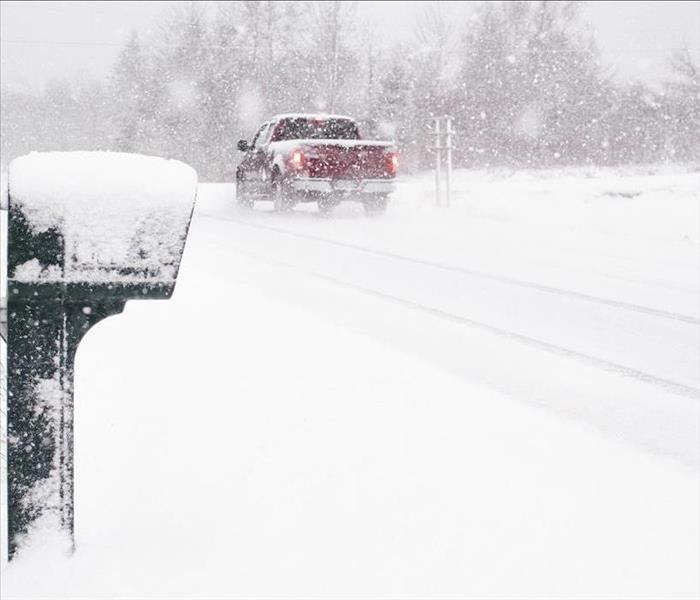 Preparing your home for winter storms in the Northeast is essential to ensure safety, comfort, and peace of mind throughout the cold season.
Preparing your home for winter storms in the Northeast is essential to ensure safety, comfort, and peace of mind throughout the cold season.
The winter season in the Northeast can be unforgiving, with freezing temperatures, heavy snowfall, and strong winds. As a homeowner or property owner in this region, it's essential to take proactive steps to prepare your home for the challenges that winter storms can bring. In this blog, we'll provide a comprehensive winter storm survival guide to help you safeguard your property, ensure the safety of your loved ones, and maintain a comfortable living environment throughout the cold season.
Weatherproofing Your Home
When it comes to weatherproofing your home, focus on creating a warm and energy-efficient environment. Inspect the insulation in your walls, attic, and crawl spaces to prevent heat loss. If needed, consider adding extra insulation to improve your home's energy efficiency. Additionally, seal any gaps or cracks around doors and windows using weatherstripping or caulking to keep cold air out and warm air in. Installing thermal curtains or window film can further enhance your home's insulation and help reduce heat loss through windows.
Maintaining the Heating System
Your heating system is crucial during the winter months, so ensure it's in good working condition. Schedule a professional inspection of your furnace or heating system to identify and address any potential issues. Regularly replace or clean air filters to maintain proper airflow and energy efficiency. Consider investing in a programmable thermostat to regulate indoor temperatures effectively and save on heating costs.
Chimney and Fireplace Safety
If you have a chimney or fireplace, prioritize safety during the winter season. Have your chimney professionally inspected and cleaned before winter to prevent potential fire hazards. Ensure the damper is functioning correctly to prevent drafts when the fireplace is not in use. Always clean out any ash and debris from the fireplace to maintain a safe and efficient heating source.
Winterizing Outdoor Spaces
Protecting your outdoor spaces and equipment from winter damage is equally important. As temperatures drop, turn off outdoor faucets and drain the water to prevent freezing and bursting pipes. Store garden hoses indoors to prevent them from freezing and becoming brittle. Clearing leaves and debris from gutters is essential to prevent ice dams and water damage to your property.
Emergency Preparedness
Winter storms can sometimes lead to power outages and emergencies, so it's vital to be prepared. Assemble an emergency kit with essentials like flashlights, batteries, non-perishable food, bottled water, blankets, and a first-aid kit. Consider investing in a portable generator to provide electricity during power outages. Establish a communication plan with family members or neighbors to stay connected and informed during emergencies.
Snow Removal and Deicing
During and after snowfall, keeping pathways safe and accessible is crucial. Keep snow shovels, ice melt, and rock salt readily available for snow removal and deicing. If you have a large property or anticipate heavy snowfall, consider hiring a snow removal service to efficiently clear pathways and driveways.
Preparing your home for winter storms in the Northeast is essential to ensure safety, comfort, and peace of mind throughout the cold season. Weatherproof your home, maintain your heating system, and prioritize chimney and fireplace safety. Winterize outdoor spaces, create an emergency preparedness plan, and equip yourself with the necessary tools for snow removal and deicing. By following this comprehensive winter storm survival guide, you'll be well-prepared to face the challenges of winter and keep your home and loved ones safe and secure.
Storm Shutters: Are They Worth the Investment for Your Home?
6/11/2023 (Permalink)
As a disaster restoration company, we know the importance of preparing your home for severe weather conditions. One common question that homeowners ask is whether they should add storm shutters to their homes. In this blog, we'll go over the pros and cons of storm shutters to help you make an informed decision.
Pros of Storm Shutters
One of the main benefits of storm shutters is that they can help protect your home from wind, rain, and flying debris during severe weather conditions. This can help prevent damage to your windows, doors, and other vulnerable areas of your home. Additionally, storm shutters can help reduce the amount of sunlight and heat that enters your home, which can improve energy efficiency and lower your utility bills.
Cons of Storm Shutters
One of the main drawbacks of storm shutters is that they can be expensive to install, especially if you have a large home or multiple windows and doors. Additionally, storm shutters can be heavy and difficult to install and remove, which can be a challenge for some homeowners. Finally, some homeowners may not like the aesthetic look of storm shutters on their home, especially if they prefer a certain architectural style or design.
Factors to Consider
When deciding whether to add storm shutters to your home, there are several factors to consider. These include the location of your home, the type of severe weather conditions you typically experience, and your budget. If you live in an area that is prone to hurricanes, tornadoes, or other severe weather conditions, storm shutters may be a wise investment to protect your home and family. Additionally, if you have a large budget and are willing to invest in high-quality storm shutters, they may be a good option for your home.
Alternatives to Storm Shutters
If you decide that storm shutters are not the right option for your home, there are several alternatives to consider. These include impact-resistant windows and doors, which are designed to withstand severe weather conditions and flying debris. Additionally, you can reinforce your windows and doors with shutters or plywood to provide temporary protection during severe weather conditions.
In conclusion, adding storm shutters to your home can be a good investment to protect your home and family during severe weather conditions. However, there are several factors to consider before making a decision, including your budget, the location of your home, and your personal preferences. If you need help preparing your home for severe weather conditions, our team at SERVPRO of Scarsdale/Mount Vernon is here to help with disaster restoration services. Contact us today to learn more.
Emergency Kit Necessities
1/23/2023 (Permalink)
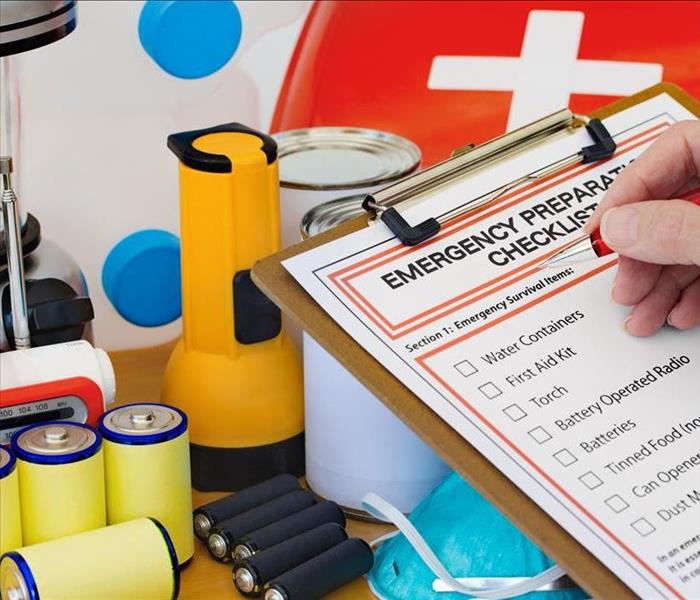 We hope this article has given you some ideas for what to include in your own emergency kit.
We hope this article has given you some ideas for what to include in your own emergency kit.
Severe weather can be unpredictable events and it can be difficult to say how severe they will be. They can cause severe flooding, property damage, and even death. It's important to be prepared for a storm so that you're ready if one hits your area. This article will discuss some of the most important aspects of your emergency kit.
Flashlights
Flashlights are an important tool for finding your way around in the dark. They can also be used to signal for help or to find things you've lost.
Extra Batteries
Batteries are a must for any emergency kit. In addition to flashlights, radios and other electronic devices will also need them. You may also want to consider storing backup chargers for your cell phone in your kit too so that you can keep your devices charged up when power is out.
Battery Powered Radio
A battery-powered radio is another crucial piece to your emergency kit. You'll want to listen to local news updates and emergency broadcasts, as well as your local radio station for updates. If you have access to NOAA weather radio, that's another resource that can be useful during a hurricane. And if you live in an area with a fire department that uses a paging system in emergencies like these, you can use this resource as well.
Non-perishable Food and Water
Ensure you have enough nonperishable food and water to sustain you and your family for at least three days. This should give you enough time for things to calm down after the storm has passed.
Water is best stored in sealed containers with tight lids so that it doesn't evaporate or spill out. Food should be kept in cool, dry locations where there is little risk of being exposed to high temperatures or direct sunlight (so no leaving your emergency kit outside).
Please remember that pets need food as well! Be sure to include pet supplies like food, bowls, and leashes for them as well.
Blankets
Blankets are one of the most important items in an emergency kit. They can be used for sleeping or as a blanket, but you may also want to include them if you live in a cold climate.
Make sure you have enough blankets for everyone in your family or group before putting together an emergency kit!
Portable Phone Chargers
If you are without power and would like to charge your phone, it's important to have a battery-powered charger on hand. Ideally, this should be a portable power bank or car charger, which can charge your phone while you are away from home.
Prescription Medications
Prescription medications are a must. Make sure to have enough medication for at least 3 days, and make sure you have a copy of your prescription in case your pharmacy doesn’t have the one you need. Make sure the medications are in their original containers with labels intact, that they haven’t expired, and that they are properly stored in airtight containers (they can lose potency quickly when exposed to heat and humidity). If possible, also include a list of all current medications (with dosages) and instructions on how to take each medication.
First Aid Kit
A first aid kit is an essential part of any emergency kit. It should be easy to carry, so don't forget to pack it in your go bag.
It's important that the first aid kit be well stocked with supplies that will help you treat minor injuries and illnesses until professional medical assistance can be reached. The following items are recommended:
- Bandages (various sizes)
- Gauze pads and rolls
- Disinfectant wipes or spray bottles (baby wipes are great for cleaning wounds)
- Antiseptic ointment - e.g., Neosporin or bacitracin
- Sterile gauze sponges or cotton balls
- Emergency tape/bandage strips
- Tweezers - for removing splinters and other small objects
Whether you're in the path of a storm or not, it's important to be prepared for emergency situations. In case of a hurricane, flood, or another natural disaster that causes damage to your home and access to shops is cut off for more than 48 hours, you'll want to have an emergency kit on hand.
We hope this article has given you some ideas for what to include in your own emergency kit. If a storm comes through and damages your Scarsdale home, give SERVPRO of Scarsdale/Mount Vernon a call! We will help you get back on your feet quickly.
The Best Response to Black Water Damage in Your Home
7/28/2022 (Permalink)
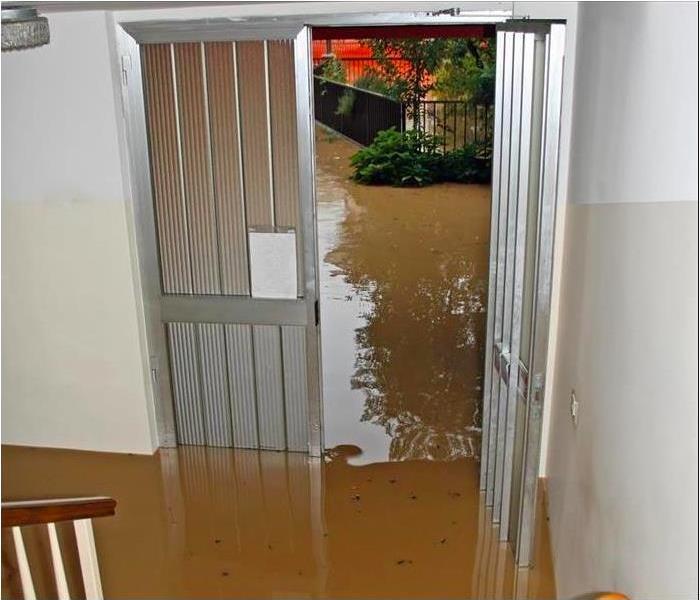 Flood damage in Bronxville, NY
Flood damage in Bronxville, NY
The Best Response to Black Water Damage in Your Home
Water damage caused by home flooding in Bronxville, NY, is a serious matter. When your surrounding area experiences a flood, water pools from sources such as sewage drains and any household contaminants kept at ground level. Flood water is also known as black water, and it is important to have as little contact with this contaminated flood water as possible. As the flood recedes, it leaves behind water damage. This damage is hazardous to your home's environment, and you should not attempt to clean it up yourself.
Attempting to clean it up yourself could lead to a bigger disaster. There could be structural damage you can't see, and when there has been standing water in your home, it is prone to other hazards, such as mold. These hidden dangers will be more expensive to repair as they are allowed to worsen and grow.
The Restoration Process
The IIRHC recommends hiring professionals who possess the protective gear and training needed to safely remove debris and restore your home to its pre-flood state. The following tasks will be performed in the remediation restoration process.
- Any areas of your home that have experienced water damage will be closed off and further assessed.
- In protective gear, a professional team will assess the damage.
Your home will be inspected for dangers that come after flooding, such as mold and structural damage.
Salvageable items will be cleaned; non-salvageable items will be discarded. This includes personal items, furnishings, fixtures, and materials such as drywall and flooring.
Any needed restoration will be performed.
After Restoration
Following restoration, your family can safely return to the home without fear of any lingering or hidden dangers. Water damage from flooding can wreak havoc on your life for a short time, but by working closely with a trusted team of professionals, the damage won't be allowed to continue to grow and you'll have peace of mind in the knowledge that all areas of concern have been properly handled.
What To Do Before Your Adjuster Arrives
6/21/2022 (Permalink)
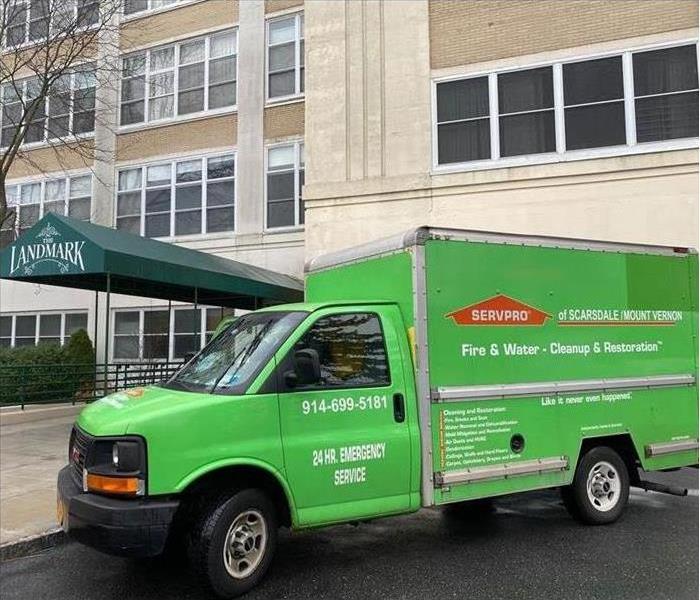 When a storm hits your home in Bronxville, NY, call SERVPRO of Scarsdale/Mount Vernon
When a storm hits your home in Bronxville, NY, call SERVPRO of Scarsdale/Mount Vernon
Before Your Adjuster Arrives, Here's What You Should Do
When a storm hits your home in Bronxville, NY, it is likely that damage will be widespread throughout the area. Even if you have flood insurance, it is still in your best interest to limit the amount of damage to your home as much as possible. Your insurance adjuster will likely be very busy during this time, so it's important to take a few key steps before he or she arrives.
Call Restoration Professionals
The first call you should make after alerting your insurance company is to flood restoration specialists. There are several benefits to calling them quickly:
• Assessment of initial damage
• Faster water extraction to prevent further harm to your home
• Itemized list of damages to help with insurance claim
Even if they get a lot of calls, they tend to be equipped to mobilize quickly in an emergency situation and can probably get to you faster than your flood insurance adjuster. In fact, with the list of damages they provide, they can actually make adjusters' jobs easier once they arrive by providing an estimate of what the remediation will cost.
Take Lots of Pictures
If the damage is severe, you may have to evacuate your home to keep yourself and your family safe. If you can safely do so, however, it is a good idea to take as many pictures as you can. You may even consider taking a video of all the affected areas of your home. If it has been a few days, and the flood damage has turned into mold damage, make sure you document that as well. The more evidence that you can provide of the repairs your home needs, the better chance you have of getting your claim accepted.
Even if you have great flood insurance, a large storm can overtax local adjusters, delaying their ability to get to you in a timely manner. Taking proactive steps to document the flood damage and keep it from getting worse can help you in the long run.
How To Conduct an Emergency Drill in a Commercial Building
4/27/2022 (Permalink)
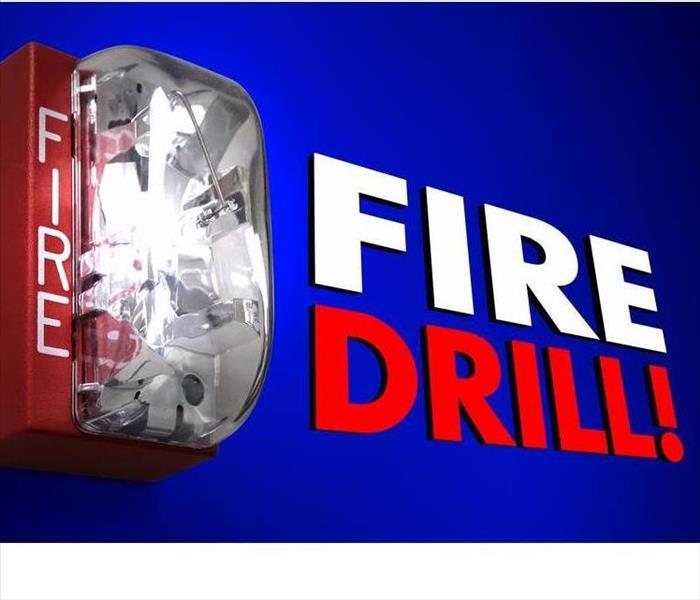 Judge your fire drill based on how long it takes everyone to evacuate the building and shut down the equipment
Judge your fire drill based on how long it takes everyone to evacuate the building and shut down the equipment
In A Commercial Building, How Do You Conduct An Emergency Drill?
A fire drill does not only prepare you and your employees for potential blazes in your commercial property. It can also help everyone learn how to evacuate the premises during major storms that damage the building.
Drills alert you to potential issues so you can correct them before an actual emergency occurs. Ideally, you should hold storm drills for your Elmsmere, NY, building at least twice annually. Here are some tips for making the most out of these drills.
1. Make an Evacuation Plan
Before you hold your next drill, ensure everyone in the office knows and understands the evacuation strategy. Map routes to the nearest exits and highlight the locations of the alarms. You should also create a communication system that keeps each employee informed about the status of the storm.
2. Set Goals
Judge your fire drill based on how long it takes everyone to evacuate the building and shut down the equipment. Set a realistic time frame for the completion of the drill and try to meet or beat that goal.
3. Rehearse
Start by doing a walkthrough of the drill with members of the emergency response team. Then hold the drill with as many of your employees as possible.
Once everyone has mastered the basic evacuation strategy, try adding some obstacles such as broken elevators and blocked stairwells. To make the drill even more realistic, have a designated employee practice calling 911 and/or cleanup and restoration professionals.
4. Observe
Have a few members of your team observe the drill in its entirety. They should specifically look for behaviors or problems that could be dangerous during a real storm. These individuals can then hold a debriefing after the drill to discuss anything that went wrong.
The above steps should help you run an efficient and effective fire drill. This way, if a severe storm forces you and your employees to evacuate, everyone will understand what to do.
3 Ways Mitigation Differs From Restoration
1/26/2022 (Permalink)
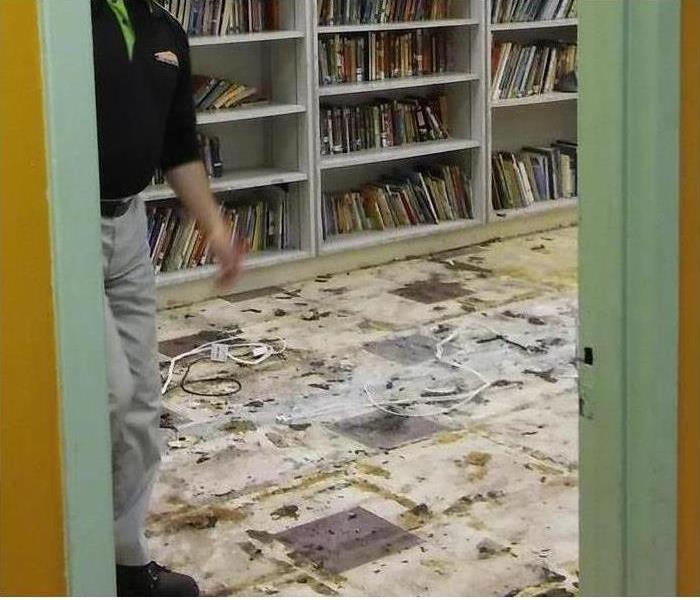 If you need mitigation or restoration service, at SERVPRO, we have the professionals to help, call us!
If you need mitigation or restoration service, at SERVPRO, we have the professionals to help, call us!
3 Differences Between Mitigation And Restoration
A commercial building that has suffered storm damage is likely to require mitigation followed by restoration. The owner may hire a flood cleanup company and a restoration company or rely on a service capable of cleaning up damage and completing repairs. Here are three differences between mitigation and restoration.
1. Mitigation Takes Place First
As soon as any type of damage has occurred, a building owner should contact a company that provides mitigation. Be sure to document the worst of the damage before taking any measures to clean up or prevent further damage. Restoration should take place after the structure has been cleaned and steps have been taken to limit additional damage.
2. The Goal of Mitigation Is Limiting Damage
Mitigation efforts focus on cleaning up existing primary damage and reducing the risk of secondary damage. For instance, a flood cleanup company will extract standing water as soon as possible to limit water damage and prevent mold growth. Another mitigation measure is tarping over a damaged roof to stop leaks. Restoration focuses on fixing the damage sustained by a structure.
3. Mitigation May Involve Tearing Out Damaged Materials
It may be necessary to tear out certain materials in order to limit damage. Carpet, drywall, insulation and other porous building materials exposed to contaminated water can be difficult to completely clean and dry. These materials may no longer function as intended and can increase the risk of mold. Tearing out is done to limit damage and falls under the category of mitigation. Restoration involves replacing these materials after the affected area is clean and dry.
Mitigation and restoration are both necessary to remediate damage at a commercial property in Scarsdale, NY. Rather than hiring a separate flood cleanup company and restoration company, look for a single service that has the equipment and expertise needed to complete the entire damage remediation process.
 You can trust our trained team to restore your business or home after a storm, to make it "Like it never happened."
You can trust our trained team to restore your business or home after a storm, to make it "Like it never happened."

 24/7 Emergency Service
24/7 Emergency Service





